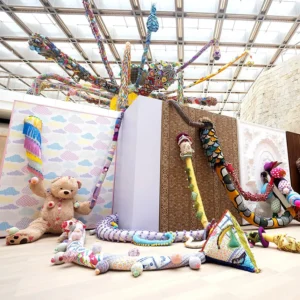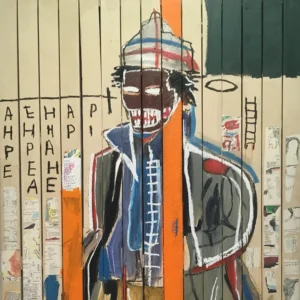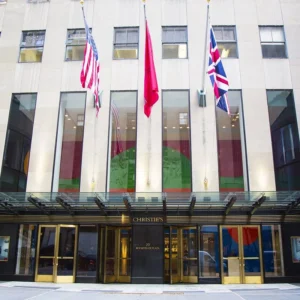Jean-Michel Basquiat’s crown is a motif that often appears in his paintings, and it has become synonymous with the artist’s work.
It may seem like just another headdress, and there are many interpretations as to its meaning, but when viewed through the lens of Jean-Michel Basquiat’s artistry, it strikes most as a symbol for both the power and vulnerability that come from being an artist.
A Brief Biography of Basquiat
Jean-Michel Basquiat was born on December 22, 1960 in Brooklyn. He started out as a graffiti artist and rose to fame by his mid-20s in his tragically short career. In addition to being known for his unique neo-expressionist painting style that carries elements of graffiti, the artist has also been associated with abstract expressionism and postmodernism.
His works often addressed racial and class issues, but in a subversive way. Because of his artistic focus, many people consider him to be part of the 1980s “Black Arts Movement”, a movement that involved African American artists who did not conform with mainstream views promoted by white Americans at the time.
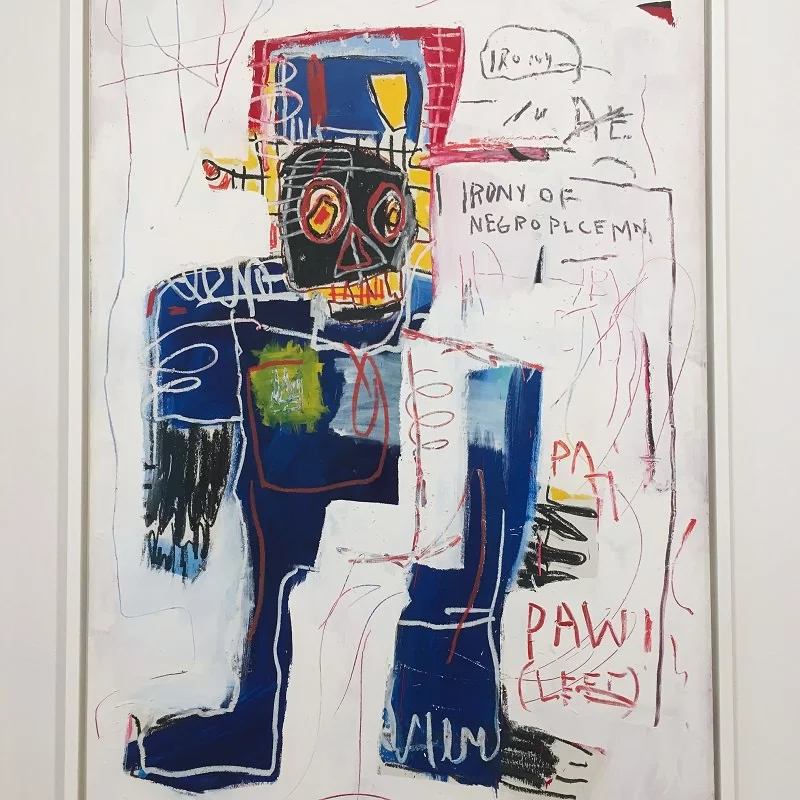
Basquiat began painting at a very young age and already had a following as a teenager in New York City. Soon after his first show at the downtown Fun Gallery, Basquiat became a star known for his vibrant, energetic paintings of ‘outsider’ figures, such as hustlers and Hell’s Angels bikers.
Following his dazzling rise to fame, his career as a successful artist was cemented when he was discovered by the famous modern artist, Andy Warhol, in the early 1980s. Warhol helped produce and promote Basquiat’s work after they became friends.
The Andy Warhol and Basquiat collaboration was an extraordinarily successful one and helped to establish Basquiat as a leading artist in the New York art scene.
Basquiat’s works are iconic and highly sought after by collectors. His paintings, praised for their raw energy and powerful expressionism, explore social, political, and racial themes.
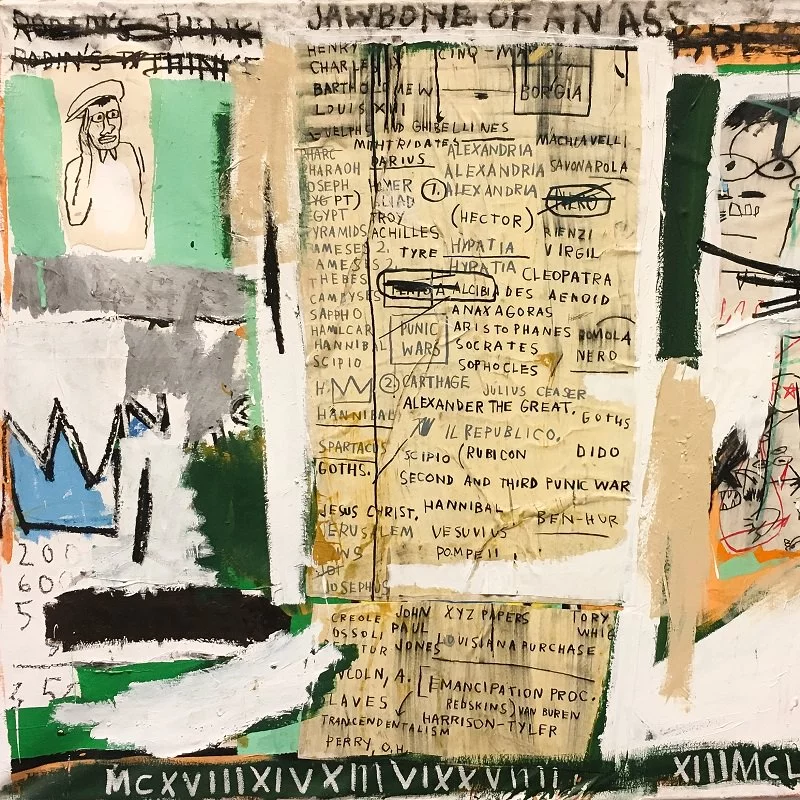
‘Basquiat Crown’ Meaning
The crown is one of the artist’s most iconic symbols. It has expanded into popular culture, appearing on everyday objects like T-shirts and coffee mugs. There are many interpretations of the ‘Basquiat crown’ meaning, as there are with any work of art, but no definitive answers.
Some people interpret the ‘Basquiat crown’ as an emblem of success and wealth, because the crown features bright colors that are often associated with royalty. Could it be that Basquiat was trying to convey the message that anyone can be successful if they work hard enough? Or the opposite – no matter how hard one works, a hereditary monarchy will always hold sway.
Others interpret the ‘Basquiat crown’ as a symbol of rebellion because it appears in paintings that address social and political issues, a theme that Basquiat often incorporates into his work, as he was known for being a rebellious spirit who challenged the status quo.
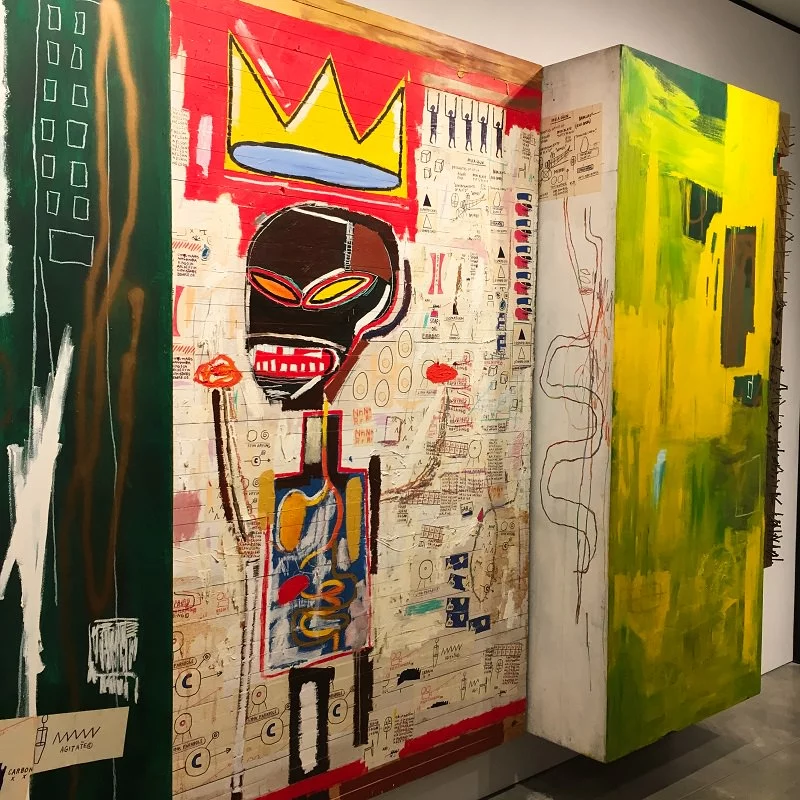
Still others believe that the ‘Basquiat crown’ is a symbol of self-expression, and the artist crowns himself as king because it often appears in paintings that depict the artist’s personal experiences and innermost thoughts.
All the interpretations boil down to one overarching truth about Basquiat: the crown is an all-in-one motif embodying the artist’s wide range of ideas about art, race, politics, fame, and more.
Basquiat’s Most Famous Crown Paintings
The first appearance of the renowned crown is in the painting titled Red Kings (1981), where Basquiat portrays himself wearing a five-pointed crown. Demarcated by a white line, the second half of the painting depicts Pablo Picasso who is also wearing a crown (a name that influenced Basquiat), but a four-pointed one.
The three-pointed crown emerges in the famous painting Untitled (1982), an ink, acrylic, and paper collage. This crown has later come to be known as the ‘Basquiat crown’.
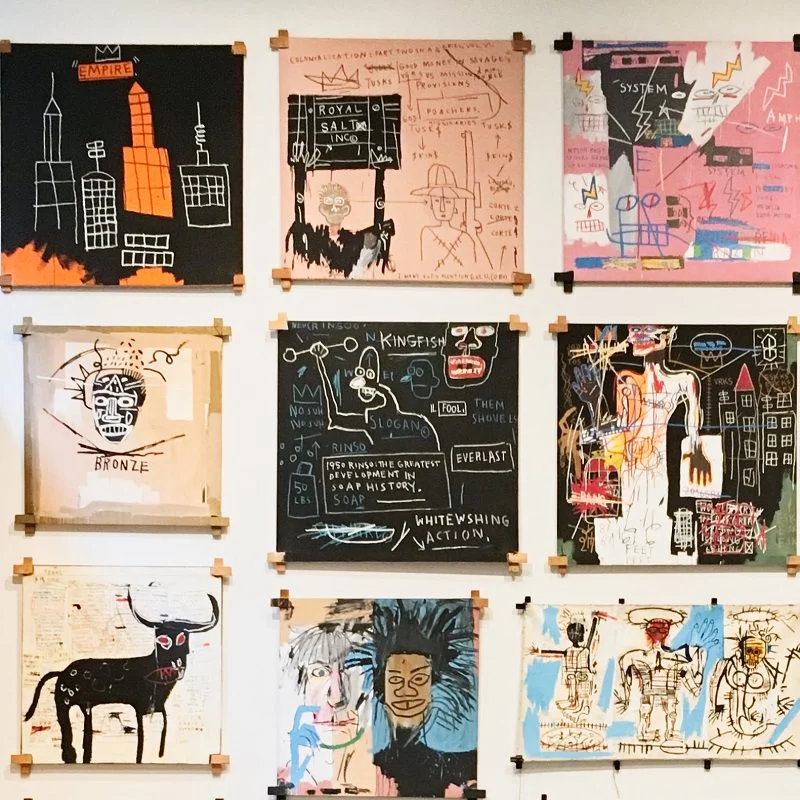
In King Alphonso (1983), a work that is part of Basquiat’s series The Daros Suite, the crown appears as the most striking element in the painting with its gargantuan size in comparison to the “king”s head. The size of the crown is believed to foreshadow the worldwide fame he would gain in the art world. Meanwhile, the letter W that is apparent on this crown (and his other three-pointed crowns) is considered to be a nod to his close friend Andy Warhol.
Some of Basquiat’s other notable works in which he incorporates the crown motif are Pez Dispenser (1984) and Trumpet (1984). In the former, Basquiat portrays a tyrannosaurus rex wearing a crown. The painting is a commentary on the commercialization and exploitation of artists, as well as Basquiat’s own experience as an artist in the public eye. The Pez dispenser represents popular consumer culture while the crown is a symbol of social inequality.
The Trumpet (1984) shows the crown sitting atop the head of a figure, probably himself playing the trumpet, as he was known to play the instrument and love jazz music. The iconic motif is the element in the painting that exhibits Basquiat’s distinguished style that mingles neo-expressionism with street art. The color black extending from the crown to the figures head suggests that Basquiat supported the idea that Black people should embrace intellectual thought to become stronger individuals.
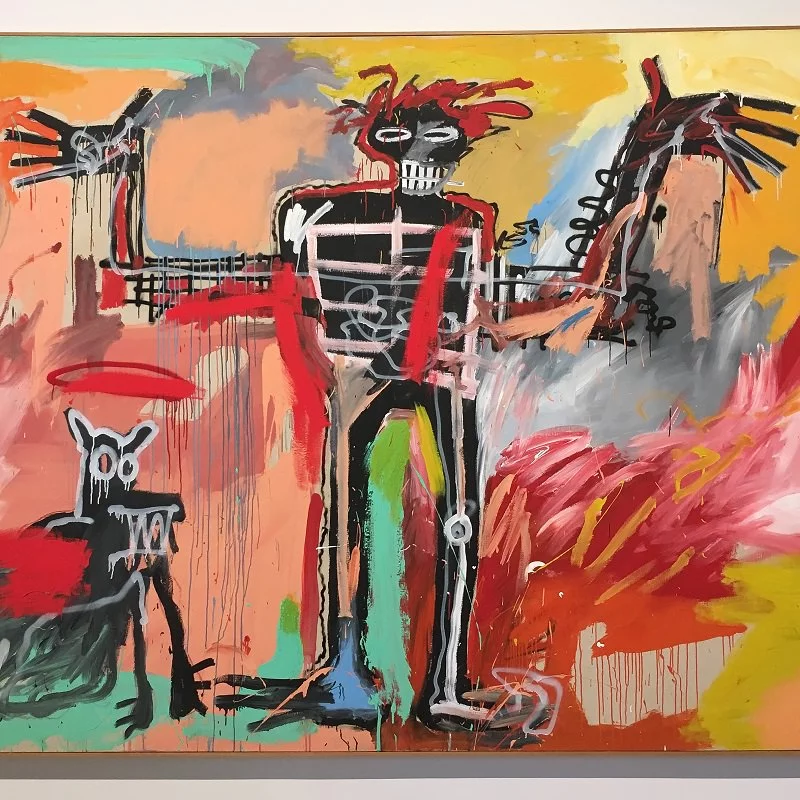
Other Basquiat Symbols
While best known for his use of the iconic crown, Basquiat also incorporated other figurative symbols into his work. Among them are images of skeletons, animals, and people. For Basquiat, these images conveyed important messages about how he experienced the world as an artist.
The anatomical components that appear in Basquiat’s paintings, for instance, in his series Anatomy (1982), are a manifestation of the artist’s fascination with the human body and the ways in which it can be incorporated into art.
Another acclaimed symbol of Basquiat is the dinosaur. Similar to the crown, the meaning extends beyond what is readily apparent. The artist gave the emblematic depiction of the extinct species a specific meaning: a motif evocative of primal instincts and raw energy. In Basquiat’s own words: “The way I paint the dinosaurs is like the way primitive people would make representations of unknown animals.”
Basquiat’s heavy use of symbolism that appears in his work is one of the many reasons he is a uniquely prominent, powerful artist. By giving familiar objects and images a whole new meaning and turning them into a series, Basquiat was able to communicate complex ideas in a way that was accessible and timelessly expressive.
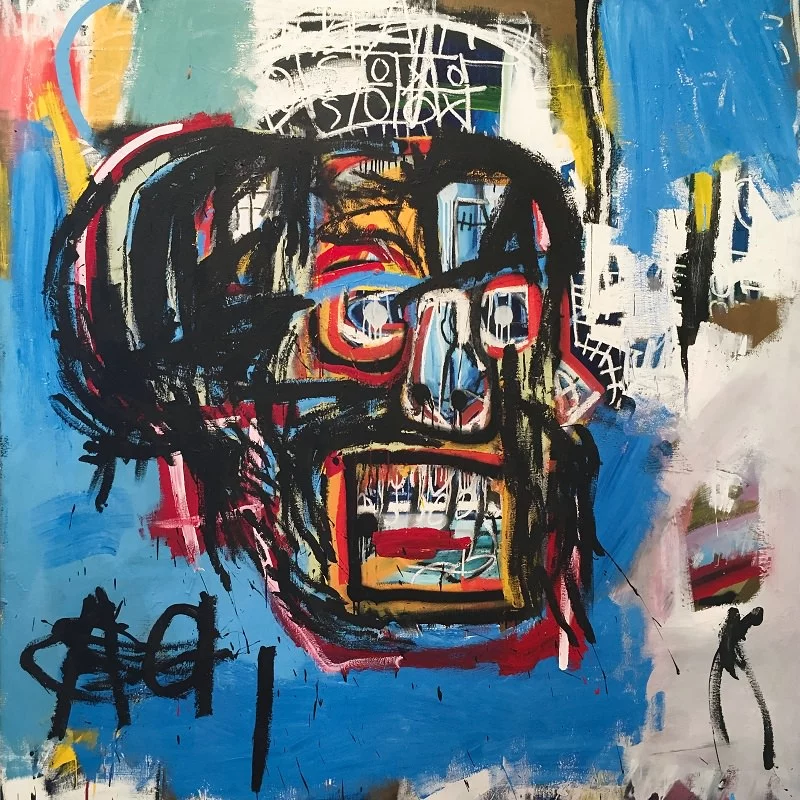
Basquiat’s Legacy
While considered an artistic genius, Basquiat was a troubled soul. He had a difficult upbringing and battled with addiction, which is thought to have been one of the reasons for his early death, and the reason behind his preoccupation with what some would consider morbid imagery.
The crown, dinosaur, and other symbols that Basquiat incorporated into his paintings are all part of his personal enigma. Basquiat was a man who desired to create a world where he could be safe from the judgmental cruelty of the world, and thus, he became one of the most iconic artists to date—a genius whose work captures the complexities and contradictions inherent to life.
And precisely because of this conundrum, Basquiat knew the real meaning behind his symbols, and we are left to speculate.

